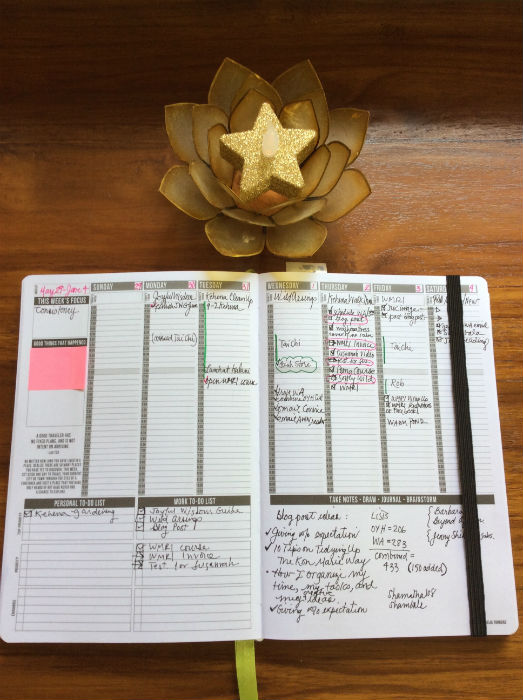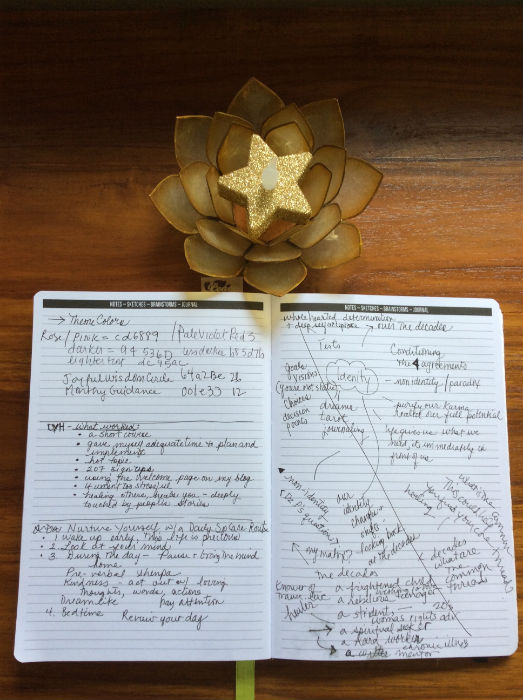 My mind is rich and creative. It tends to be scattered and chaotic as well. I need to systematically pour its contents into an organized planning system so my life doesn’t go into chaos too - due to a lack of focus, an absence of structure, or lost information.
My mind is rich and creative. It tends to be scattered and chaotic as well. I need to systematically pour its contents into an organized planning system so my life doesn’t go into chaos too - due to a lack of focus, an absence of structure, or lost information.
I’ve tried innumerable planning systems over the years - physical planners, electronic devices, and online programs. I dropped most of them after a week or two and went back to my haphazard ways.
I finally found a simple planning and task management approach that works for me. Since we all have different personalities and different dimensions of activity, there’s no single appointment book or list manager that will work for everyone.
So as a first step, it’s important to discover what makes a good fit for you when it comes to staying on track with your goals, tasks, appointments, and ideas. These are some of the qualities I require from an organizational system to be effective and enjoyable for me.
- Simple. I’ll drop anything too complex or overly technical.
- Physical. I don’t know why, but I’ve never been able to get used to electronic devices or online list and task managers like Todoist. Neither have I taken to note-taking systems like Evernote, no matter how much people sing their praises. I don’t want to spend unnecessary time online either. I don’t think excess online time is healthy for the body, mind, or soul. I’d rather cozy up in a corner with my physical planner and reflect on the week or month ahead or the one that just ended.
- One place. I need to keep everything in one place to avoid feeling and being scattered. That being said, I have one place for planning and tasks and a second place for my writing and creative ideas.
If your organizational system isn't working well for you right now, take a moment to understand what your fundamental needs truly are. You might need to collaborate with others or to sync your system across devices, in which case my approach would not work for you at all. I'm not trying to sell you on my organizational system, but to inspire you to find one that works for you or to fine-tune the one you already have so it fits even better.
In addition, no system works if I don't abide by these mottos:
- Write everything down.
- Carry my planner with me all the time.
Now here are my three main organizing tools for keeping track of my time, tasks, and creative ideas in a relatively simple way.
The Passion Planner
I use the Passion Planner as my primary planning and task organizing tool. I like the Passion Planner because it includes space for tasks and goals in addition to appointments. I’m light on appointments and heavy on tasks and goals, one reason many day-timer style agendas don’t work for me.
These are the features I treasure and use assiduously in the Passion Planner:
The weekly spread, which includes - in addition to the daily appointment columns - a separate area for personal and work to-dos and another blank section for notes, doodling, or brainstorming. I jot blog posts ideas, important codes, access numbers for conference calls, and the like in this spot.
I schedule my daily to-dos in each day’s column around my appointments, and check them off as I complete them. If I don’t complete a to-do on a particular day, I highlight it so I know to address it the next day. At the end of the week, I move unfinished tasks to the next week, and I move unused blog ideas to my Scrivener folder (explained below).
Being able to see a whole week of appointments, tasks, notes, and accomplishments in one glance works better for me than the isolation of a day at a time.
The monthly calendar, which includes - in addition to the calendar - a section to list personal projects and goals and another for work projects and goals as well as a blank space for notes or a mind map of goals and action steps.
I like being able to see all my appointments or events for a month in one glance as well as the ability to mark off extended periods for a specific focus or time away. Yes, that means I write them down twice, once in the monthly view and once in the weekly view, but it works for me.
You'll probably notice a continuing theme: I need space for goals and tasks as well as blank space for notes and creative ideas. That's why I like this particular planner.
The 2-pages allotted for month-end reflections, which includes 7 questions to help you capture memories and lessons, highlight achievements, and identify areas in need of improvement.
If I wait until the end of the year, I often find I don’t remember what happened in the last 12 months without some prodding and poking. So I like to record my most important lessons and memories as I go along during the year. Plus, I’m keen on pausing monthly to evaluate what’s working, what’s not.
The generous supply of lined and grid pages at the end of the planner, which I use for notes, idea lists, and mind maps, but just the most important ones. My important lists include ideas for my Joyful Wisdom Guide, Wild Arisings letter, blog post topics, and course themes. I also have a list of favorite colors for Facebook images. A calendar of the 2016 moon phases sits between two of these pages as well.
These pages can be customized for yearly goals, quarterly goals, action steps, and accomplishments, habit trackers, inspirational quotes, and really anything you like, need, or want. You can number the pages and start with an index so you can easily access any particular list.
The Passion Planner was created by Angelia Trinidad. I love supporting a woman/minority owned small business that started in a garage just a few years ago. In addition, the planners use environmentally friendly recycled paper, and they give away one planner for each one sold. Isn’t that the best!
You can download a free PDF version of the Passion Planner here if you want to try it out.
Mind Maps

I write from inspiration, which thankfully is plentiful. Mind-mapping turns out to be one of the best ways to capture my creative inspiration.
For example, when an idea for a Joyful Wisdom Guide pops up, I open my planner to a blank page, and draw a circle for the main theme in the center. Then I add lines to circles with supporting ideas and can elaborate on any one of them further by drawing additional lines and circles. As more ideas emerge over the next few days, I just add them to the map. You can see the one I did for the theme of "identity" in the image above.
I also plot out daily lessons for a course this way, creating a mind map for each week. I use a pencil so I can move the daily topics around until I find the perfect fit.
I draw my mind maps on the grid or lined pages in the back of my Passion Planner. That way, I have everything important in one place.
Scrivener

Scrivener is an amazing writing software. I use only a fraction of its capabilities, but it keeps my writing well organized in one place. I create a separate Project for each endeavor: my blog, a course, or an e-book. The image you see above is the repository for all my blog posts drafts and blog post ideas dating back to 2011, as well as the draft of this current post to the left.
Within each project, you can create file folders as I did for the months in the above image. Then you can create a text document for each blog post, chapter, lesson, note or another form.
I draft all my blog posts, newsletters, courses, and e-books in Scrivener. Again, everything lives in one place. The only exception is my monthly Joyful Wisdom Guide which I draft directly in Pages. There's only one drawback to having everything in one place: You could lose it in a flash. So backups are important.
There's so much more you can do with Scrivener. You can try a free 30-day trial of Scrivener here.
When I use these tools, I stay on track, life is less chaotic, and I feel more at ease. I haven’t entirely overcome my tendency to float on a cloud, address whatever happens to appear in my mind, and forget the rest. I sometimes don’t use my planner for weeks at a time. But I always feel better when I do. So I’m a work-in-progress, but at least I’m one with a good working system in place, always read to go.
Do you have a good task management system in place? What works for you?
Something Extra for You
I'm in the process of realigning my goals for the remainder of 2016. If you would like to do the same or set new goals for the rest of 2016, you can download my free Goal Setting Worksheet here.
Thank you for your presence! If you enjoyed this post, please share it on your favorite social media sites. Thank you! May you be well, happy, and safe - always! With love, Sandra
